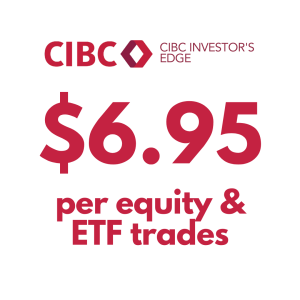
If you’re an investment enthusiast, you may be familiar with the term “risk diversification.” It’s one of the basic principles of sound investing. But, what is risk diversification exactly?
There’s an age-old saying, “do not put all your eggs in one basket.” This is typically the idea behind risk diversification. It emphasizes sharing your investment across various financial instruments and investment vehicles.
This way, you can ensure you don’t lose everything if an investment performs poorly. In this article, we’ve answered the question, what is risk diversification along with covering some effective strategies. You’ll also learn how diversification impacts your investment portfolio.

Table of contents
What does diversification of risk mean?
Diversification of risk means investing across a variety of assets, categories, and industries. It is an investment strategy that seeks to help investors manage potential risks. Generally speaking, there are two forms of risks associated with investing. These include specific risks and market risks.
Specific risks are particular to an investment, a company, or an industry. They aren’t generic risks that apply to all investments. Let’s assume that crude oil prices surge. The change in price will affect the profitability of oil companies and investors’ portfolios in turn.
CIBC Investor’s Line Offer
Up to $6.95 per online stock or ETF trade. Plus, there’s no minimum account balance.
Market risks affect all companies and industries. They’re almost impossible to avoid. Examples include factors like economic downturns, natural hazards, and changes in interest rates. When there’s an economic crisis, for instance, it affects all businesses, regardless of industry. While you cannot manage market risks through diversification, you can take an offsetting position. This is called hedging risks. In addition, investing in multiple industries is a way of mitigating some market risk, but it’s impossible to avoid it entirely.
We’ve answered the question, what is risk diversification? Now, let’s see how diversification reduces risk.

How does diversification reduce risk?
The idea behind risk diversification is that putting all your money in one place is risky. If the company happens to crash, your nest egg will follow suit. It’s better if you can spread your money around. Hence, by holding a fraction of your money in different places, you spread your potential risk. In other words, you ensure that a negative occurrence at one company doesn’t result in significant loss.
Risk diversification is not only about the diversification of investments across different companies and industries. It’s also about the diversification across different risk levels. More specifically, you should spread your money across low, medium and high risk investments, while also investing in multiple markets.
CIBC Investor’s Line Offer
Up to $6.95 per online stock or ETF trade. Plus, there’s no minimum account balance.
What is an example of risk diversification?
Here’s a practical example of diversification of risk using two hypothetical investors. Investor A and Investor B both have $10,000 to invest. Investor A invested $10,000 in Company XYZ. On the other hand, Investor B invested $1,000 in Company XYZ and $1,000 in 9 other different assets. Five years later, Company XYZ crashed due to an unforeseen economic crisis. Investor A loses their entire investment of $10,000 while Investor B loses only $1,000.
Chances are low that the other 9 investments held by Investor B will perform badly all at once. So, let’s say that 6 out of 10 investments perform well, Investor B can cover the loss of the other 4, including Company XYZ. This is the power of risk diversification!
Related Reading: How to Invest $1,000, $10,000 or $100,000
What are the advantages of risk diversification?
Balancing your portfolio across various investments comes with an array of benefits. Let’s explore the advantages of risk diversification.
1. Reduces the riskiness of your portfolio
Diversification remains a potent strategy for reducing unsystematic risks. It allows you to take advantage of good investments to offset the losses of others. This means that no single investment can have a drastic impact on your portfolio.
Let’s say you own stocks in the healthcare, banking, and agriculture sectors with varying degrees of risk. In the case of a negative event that affects the banking sector, only your investment in that industry will be affected. The rest of your portfolio could maintain a positive performance. In fact, that positive performance can sometimes be enough to outweigh the negative performance! In other words, the volatility of different assets will balance each other out, giving you a more stable portfolio.
CIBC Investor’s Line Offer
Up to $6.95 per online stock or ETF trade. Plus, there’s no minimum account balance.
2. Enhances risk-adjusted return
Decent returns are attractive, but they don’t just happen. Investors often take some risks to get the flashy numbers. After all, high risk equals high return.
Risk-adjusted return takes into account the degree of risk associated with the investment. It provides a way to measure the investor’s efficiency in deploying their capital. A diversified portfolio allows you to earn greater returns compared to the risk you’re taking.
With all this said, it’s wise to invest in some lower risk investments to ensure you’re not gambling all your money within high risk investments. High risk often equals high return, but it can also mean high loss.
3. Increases peace of mind
Think about the tension that comes with putting all your funds in one position. Every slight market movement keeps you at the edge.
With a diversified portfolio, you spend less time monitoring your portfolio or worrying about losses. All investments will not move in sync, protecting your portfolio from market swings. A diversified portfolio offers greater stability, thereby eliminating worry.
Related Reading: How to Invest in Index Funds in Canada
What are some risk diversification strategies?
If you’re considering diversifying the risk in your portfolio, there are different approaches you can adopt. Let’s take a closer look below.
Diversification across asset classes
One of the foremost ways to diversify your investment is by investing in many asset classes. You may ask, what is an asset class? An asset class represents a group of investment vehicles with similar characteristics. The most common asset classes include:
- Stocks: shares of publicly traded companies. Investors can make a profit through dividends or a rise in share prices.
- Bonds: these refer to government and corporate debt securities. They allow you earn returns in the form of interest on a deposit.
- Cash equivalents: these include treasury bills and guaranteed investment certificates (GICs). Cash equivalents are short-term, low-risk, and liquid investments.
Other asset classes include:
- Commodities: these are natural resources such as gold, silver, and other precious materials. They act as a hedge in times of economic uncertainties.
- Real estate: tangible assets such as lands and buildings. This asset class is also used as an inflation hedge by investors.
When diversifying across asset classes, you should carefully allocate your portfolio to each. Consider your risk tolerance, investment goals, and time horizon. Also, consider the inherent risk and profitability of each asset individually.
Diversification across industries and sectors
Another risk diversification strategy is investing in a variety of industries. Owning a mutual fund or an exchange traded fund (ETF) has made it easier for investors to diversify across sectors.
Mutual funds invest in a wide range of assets, including stocks and bonds. In essence, you can own small portions of different investments through a mutual fund. You wouldn’t have to pick individual stocks from different asset categories. The same is true of ETFs, except that shares are publicly traded on a stock exchange.
You can still diversify across industries and sectors without using mutual funds and ETFs. Simply invest in various markets, such as banking, agriculture, technology and so on. By investing in multiple sectors, you’ll ensure your money isn’t significantly affected by a risk in one particular market.
CIBC Investor’s Line Offer
Up to $6.95 per online stock or ETF trade. Plus, there’s no minimum account balance.
Market capitalization (large vs. small companies)
Investors often diversify their investments in various companies based on market capitalization. Market cap indicates a stock’s growth and profit potential as well as the level of inherent risk.
You can invest in small-cap and large-cap investments within one asset class, for instance stocks, to manage risk. Typically, small-cap stocks are more volatile and, as such, riskier. But historically, they have outperformed large-cap stocks. Their share prices also have greater growth potential.
Large-cap, sometimes called blue-chip companies, tend to perform well and let investors enjoy stable returns. This is because they’re less volatile. Although this is not the case for all large-cap investments. You’ll still need to perform research before making an addition to your portfolio.
Geography (foreign vs. domestic companies)
Investing in home-based companies can be a great way to boost the economy. But it can limit your portfolio and potential returns. Canada makes up roughly 3% of the world’s markets. As a result, investing only in Canadian stocks limits your portfolio.
You can decide to move away from home bias and include foreign investments in your portfolio. You should invest in emerging and developed markets to seize the opportunities they present. However, there are great opportunities in the United States, Europe and other foreign places with established markets. This type of diversification ensures that a national economic headwind won’t crash your nest egg.
Growth vs. Value
Diversification can be in the form of investing in companies at different growth stages. It’s easier for investors to buy stocks of companies like Coca-Cola, Apple, and Tesla. These companies are not only stable but have shown historical growth in profit, revenue, and cash flow. They’re known as growth companies. The chances of losing your investments in these established companies tend to be low. Growth stocks are also expected to increase profits at a faster rate than average.
On the flip side, some companies appear to trade at a lower price compared to their fundamentals. These are known as value investments. These investments don’t have lofty valuations, yet they tend to outperform growth companies in the long run. Investing in both types of public equities is a smart approach to keep the risk of loss down.
Related Reading: 5 Best Money market ETFs in Canada
Why is risk diversification important?
If you want to build a solid portfolio, it is important to diversify your investments. We’ve seen different examples of how diversification impacts your portfolio. Risk control is at the heart of risk diversification. If you can reduce your overall investment risk, you’ll have a healthier portfolio.
Besides, you get to expand your investment knowledge. Many investors never go beyond stocks and bonds. While they’re the most common type of investment, there are other great ways to make money through investing. Diversifying your risk helps you learn about and explore other opportunities.
Lastly, increased exposure equals increased earning opportunities. Savvy investors will want to find other investment opportunities to increase earnings. Diversification comes in handy in this case.
What is risk diversification? Take it from the literal sense. If you have all your eggs in one basket, and the basket happens to fall, you’re most likely to lose all your eggs. Investing in a wide range of financial instruments means spreading your potential risk. If something goes wrong with one, another can make up for the loss. A diversified portfolio means less risk, more earning opportunities, and greater stability.
So you see, risk diversification is not just an investing verbiage — it’s a principle every investor should heed!
Read More: What is Diversification Strategy in Personal Finance?

